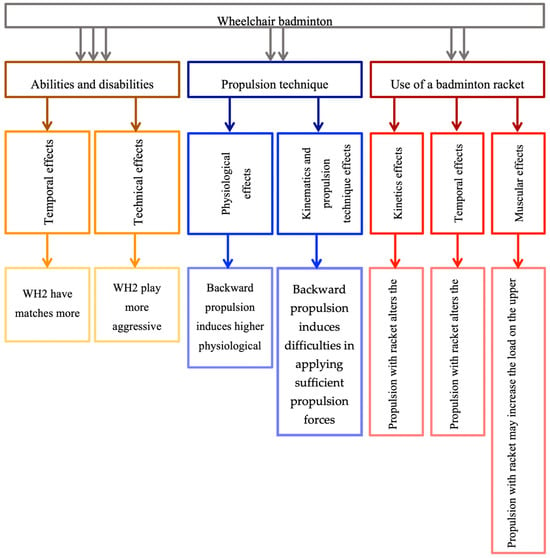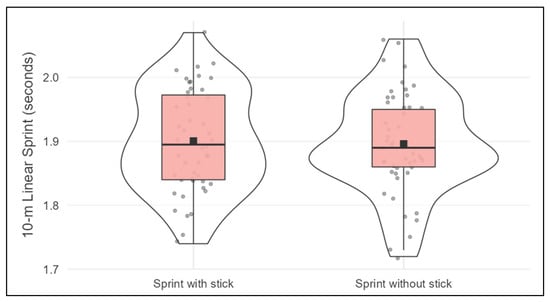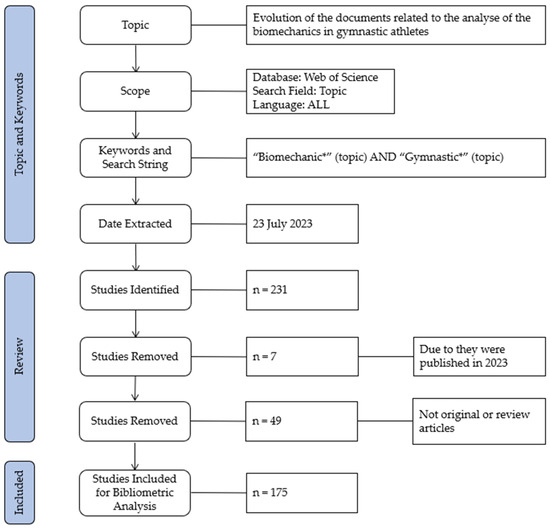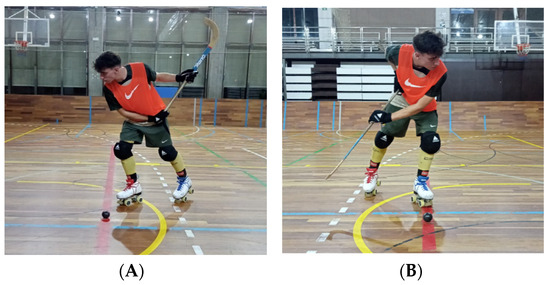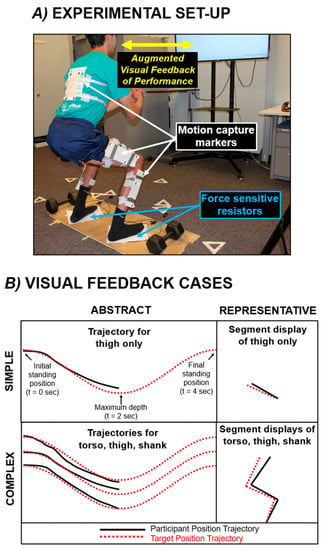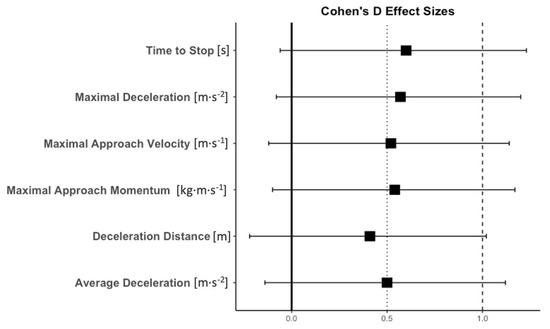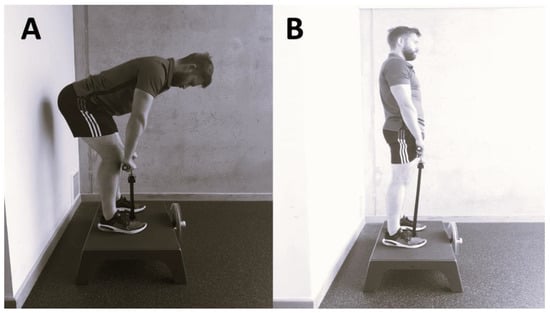Locomotion Biomechanics and Motor Control
A project collection of Biomechanics (ISSN 2673-7078). This project collection belongs to the section "Sports Biomechanics".
Papers displayed on this page all arise from the same project. Editorial decisions were made independently of project staff and handled by the Editor-in-Chief or qualified Editorial Board members.
Viewed by 10568
Share This Project Collection
Editor
 Prof. Dr. Ka-Chun (Joseph) Siu
Prof. Dr. Ka-Chun (Joseph) Siu
 Prof. Dr. Ka-Chun (Joseph) Siu
Prof. Dr. Ka-Chun (Joseph) Siu
E-Mail
Website
Collection Editor
Department of Health & Rehabilitation Sciences, University of Nebraska Medical Center (UNMC), Omaha, NE 68198-4420, USA
Interests: biomechanics gait analysis rehabilitation posture motion analysis postural balance; public health movement analysis; laparoscopic surgery; physical rehabilitation
Special Issues, Collections and Topics in MDPI journals
Project Overview
Dear Colleagues,
Motor control and biomechanics have gradually developed important research fields in human/Animal movement. Locomotion biomechanics is a fascinating interdisciplinary research field that addresses key aspects of how the biological motor system is designed and controlled. Its research field comprises the function of the musculoskeletal system (body mechanics), neuromuscular system (Neurocontrol and Neuromodulation) as well as the organization of sensorimotor functions (motor control and learning). Motor control underlies motion, balance, stability, coordination, and our interaction with others. The integration between biomechanics and motor control deserves more attention and discussion.
This collection focuses on collecting papers that investigate motor control based on complicated locomotion biomechanics methodologies and use biomechanical theories. It also aims to explore the key techniques, theories, and applications of locomotion biomechanics and motion control. This Special Issue welcomes original research and review papers covering the following topics(including but not limited to):
- Locomotion;
- Movement;
- Gait analysis;
- Posture and balance;
- Kinematics;
- Motor control.
Prof. Dr. Ka-Chun (Joseph) Siu
Collection Editor
Manuscript Submission Information
Manuscripts should be submitted online at www.mdpi.com by registering and logging in to this website. Once you are registered, click here to go to the submission form. Manuscripts can be submitted until the deadline. All submissions that pass pre-check are peer-reviewed. Accepted papers will be published continuously in the journal (as soon as accepted) and will be listed together on the collection website. Research articles, review articles as well as short communications are invited. For planned papers, a title and short abstract (about 100 words) can be sent to the Editorial Office for announcement on this website.
Submitted manuscripts should not have been published previously, nor be under consideration for publication elsewhere (except conference proceedings papers). All manuscripts are thoroughly refereed through a single-blind peer-review process. A guide for authors and other relevant information for submission of manuscripts is available on the Instructions for Authors page. Biomechanics is an international peer-reviewed open access quarterly journal published by MDPI.
Please visit the Instructions for Authors page before submitting a manuscript.
The Article Processing Charge (APC) for publication in this open access journal is 1000 CHF (Swiss Francs).
Submitted papers should be well formatted and use good English. Authors may use MDPI's
English editing service prior to publication or during author revisions.
Published Papers (9 papers)
Open AccessReview
Wheelchair Badminton: A Narrative Review of Its Specificities
by
Ilona Alberca, Bruno Watier, Félix Chénier, Florian Brassart and Arnaud Faupin
Viewed by 427
Abstract
This narrative review aims to provide a comprehensive overview of the scientific literature on wheelchair badminton and its distinctive aspects, encompassing abilities and disabilities, propulsion technique, and the use of a racket. The relatively young history of wheelchair badminton is reflected in the
[...] Read more.
This narrative review aims to provide a comprehensive overview of the scientific literature on wheelchair badminton and its distinctive aspects, encompassing abilities and disabilities, propulsion technique, and the use of a racket. The relatively young history of wheelchair badminton is reflected in the scarcity of scientific studies within this domain, highlighting the need for further investigation. The review systematically covers existing articles on wheelchair badminton, offering a nearly exhaustive compilation of knowledge in this area. Findings suggest that athletes with abdominal capacities engage in more intense matches with a higher frequency of offensive shots compared to athletes with little or no abdominal capacities. Moreover, backward propulsion induces higher cardiorespiratory responses, overall intensity of effort, physiological stress, metabolic load, and rating of perceived exertion, particularly at high imposed rolling resistance or speeds, and makes it difficult to generate sufficient forces on the handrim, requiring adjustments in the kinematics of propulsion techniques, particularly at high rolling resistances or speeds, potentially leading to performance decrements. The use of a badminton racket further increases generated forces while decreasing the efficiency of propulsion and modifying the propulsion technique with shorter and quicker pushes, potentially impacting performance. Further research is imperative to explore additional perspectives, address existing gaps, and expand the scope of study within the wheelchair badminton domain. This narrative review serves as a foundation for future investigations, emphasizing the necessity of continued research to enhance our understanding of wheelchair badminton.
Full article
►▼
Show Figures
Open AccessArticle
Influence of the Stick Grasping in Sprint and Change of Direction Performance in Elite Youth Rink Hockey Players
by
Jordi Arboix-Alió, Guillem Trabal, Bernat Buscà, Dani Moreno-Galcerán, Bernat de Pablo, Hugo Sarmento and Vasco Vaz
Viewed by 470
Abstract
This study aimed to investigate the influence of stick grasping on the performance of elite youth rink hockey players in 10 m linear sprints and 180° change of direction (COD) tasks. Forty-nine rink hockey players (age = 18.40 ± 2.12 year; body mass
[...] Read more.
This study aimed to investigate the influence of stick grasping on the performance of elite youth rink hockey players in 10 m linear sprints and 180° change of direction (COD) tasks. Forty-nine rink hockey players (age = 18.40 ± 2.12 year; body mass = 73.52 ± 6.02 kg; height = 1.82 ± 0.07 m; BMI = 23.61 ± 1.69; sports experience = 6.42 ± 1.41 years; 4.89 ± 0.68 years’ post-peak height velocity) participated in this cross-sectional study. Measurements included 10 m sprint time and COD 180° performance with and without stick grasping. Results revealed non-significant differences when carrying a stick in the 10 m linear sprint (1.90 s ± 0.08 with stick vs. 1.89 s ± 0.08 without stick;
p = 0.71;
d = 0.05), neither did COD 180° for the left limb (2.75s ± 0.11 with stick vs. 2.76 s ± 0.11 without stick;
p = 0.91;
d = 0.02). However, for the right limb, significantly better performance in COD 180° was found when players held the stick (2.72 s ± 0.11 with stick vs. 2.75 s ± 0.09 without stick;
p = 0.03;
d = 0.32). These findings imply that the distinctive biomechanics and requirements of rink hockey, especially the lateral movements inherent in skating, might alleviate the negative impacts associated with implement grasping observed in other sports. This study highlights that stick grasping did not hinder COD ability and may even have a facilitating effect on certain movements, emphasizing the importance of considering sport-specific biomechanics in rink hockey performance analysis.
Full article
►▼
Show Figures
Open AccessReview
Evolution of Documents Related to Biomechanics Research in Gymnastics
by
Víctor Hernández-Beltrán, Mário C. Espada, Jesús Muñoz-Jiménez, Kiko León, Cátia C. Ferreira, Jose A. Parraca and José M. Gamonales
Viewed by 1342
Abstract
Biomechanical analysis has been one of the most used procedures when aiming to improve performance in sports and is also very relevant and decisive in the final classification of competitive events in sports such as gymnastics. Hence, this study sought to provide an
[...] Read more.
Biomechanical analysis has been one of the most used procedures when aiming to improve performance in sports and is also very relevant and decisive in the final classification of competitive events in sports such as gymnastics. Hence, this study sought to provide an overview of the number of scientific literature publications related to biomechanics research in gymnastics. The document search was completed in March 2023 and reflected a bibliometric analysis considering the published manuscripts up to 31 December 2022. Data collection was performed on the Web of Science, following the bibliometric analysis law, using Microsoft Excel and VosViewer Software (v1.6.19) for analysis and data processing. A total of 325 documents related to the topic under study were located. The results highlight that the older manuscripts date from 1980, with a growing trend of publications from that moment until now and a very visible increase in 2015, and that Sport Science is the category associated with more published manuscripts. A total of 30 manuscripts have 30 or more citations, 746 authors and co-authors are associated with the publications, and 58 co-authorships have published one or more studies. Moreover, 47 countries or regions have been associated with the topic under study, with the USA, England, and Australia being the countries with the most published articles and citations. The study also found that the highest frequency keywords are: “gymnastics” (
n = 122), “biomechanics” (
n = 73), “simulation” (
n = 27), and “performance” (
n = 25), considering the average year of publication of the documents, “balance” (
n = 11), “artistic gymnastic” (
n = 14) and “training” (
n = 25) are the most frequently used terms. This study reveals that the topic of biomechanics in gymnastics has shown sustained growth and deserves the attention of the scientific community, but at the same time, there is still much room for research development.
Full article
►▼
Show Figures
Open AccessCommunication
Assessing the Shooting Velocity According to the Shooting Technique in Elite Youth Rink Hockey Players
by
Jordi Arboix-Alió, Guillem Trabal and Dani Moreno-Galcerán
Viewed by 930
Abstract
This study aimed to report the shooting velocities and to assess the differences in shot velocity according to the techniques used in elite youth male rink hockey players. Fifteen rink hockey players (age = 18.40 ± 1.44 year; body mass = 73.52 ±
[...] Read more.
This study aimed to report the shooting velocities and to assess the differences in shot velocity according to the techniques used in elite youth male rink hockey players. Fifteen rink hockey players (age = 18.40 ± 1.44 year; body mass = 73.52 ± 6.02 kg; height = 1.76 ± 0.06 m; BMI = 23.61 ± 2.12; sports experience = 6.44 ± 1.76 years) participated in this cross-sectional study. Shooting velocities were assessed for four techniques: slap shot without approach run, drive shot without approach run, slap shot with approach run, and drive shot with approach run. Shooting velocity measurements were conducted using a radar Stalker ATS systemTM. The results demonstrated that drive shots consistently achieved higher velocities compared to slap shots (F(
3,56) = 23.9
p < 0.01, η
p2 = 0.58). Additionally, incorporating an approach run significantly increased shooting velocities for both techniques (
p < 0.01). These findings hold significant implications for coaches and players seeking to optimize shooting performance in rink hockey.
Full article
►▼
Show Figures
Open AccessArticle
Joint Moment Responses to Different Modes of Augmented Visual Feedback of Joint Kinematics during Two-Legged Squat Training
by
Raviraj Nataraj, Sean Patrick Sanford and Mingxiao Liu
Viewed by 1285
Abstract
This study examined the effects of different modes of augmented visual feedback of joint kinematics on the emerging joint moment patterns during the two-legged squat maneuver. Training with augmented visual feedback supports improved kinematic performance of maneuvers related to sports or daily activities.
[...] Read more.
This study examined the effects of different modes of augmented visual feedback of joint kinematics on the emerging joint moment patterns during the two-legged squat maneuver. Training with augmented visual feedback supports improved kinematic performance of maneuvers related to sports or daily activities. Despite being representative of intrinsic motor actions, joint moments are not traditionally evaluated with kinematic feedback training. Furthermore, stabilizing joint moment patterns with physical training is beneficial to rehabilitating joint-level function (e.g., targeted strengthening and conditioning of muscles articulating that joint). Participants were presented with different modes of augmented visual feedback to track a target squat-motion trajectory. The feedback modes varied along features of complexity (i.e., number of segment trajectories shown) and body representation (i.e., trajectories shown as sinusoids versus dynamic stick-figure avatars). Our results indicated that mean values and variability (trial-to-trial standard deviations) of joint moments are significantly (
p < 0.05) altered depending on the visual feedback features being applied, the specific joint (ankle, knee, hip), and the squat movement phase (early, middle, or late time window). This study should incentivize more optimal delivery of visual guidance during rehabilitative training with computerized interfaces (e.g., virtual reality).
Full article
►▼
Show Figures
Open AccessArticle
Performance, Perceptual and Reaction Skills and Neuromuscular Control Indicators of High-Level Karate Athletes in the Execution of the Gyaku Tsuki Punch
by
Márcio Fagundes Goethel, João Paulo Vilas-Boas, Leandro Machado, Ulysses Fernandes Ervilha, Pedro Vieira Sarmet Moreira, Antonio Roberto Bendilatti, Joseph Hamill, Adalgiso Coscrato Cardozo and Mauro Gonçalves
Cited by 2 | Viewed by 989
Abstract
This study aimed to investigate and compare the performance, perceptual and reaction skills and neuromuscular control indicators of sub-elite (SEG) and elite (EG) karate athletes during the execution of a Gyaku Tsuki punch. The study included 14 male athletes, equally divided into two
[...] Read more.
This study aimed to investigate and compare the performance, perceptual and reaction skills and neuromuscular control indicators of sub-elite (SEG) and elite (EG) karate athletes during the execution of a Gyaku Tsuki punch. The study included 14 male athletes, equally divided into two subgroups according to their current competitive level. We analyzed the peak and mean linear velocity of the wrist, linear peak acceleration/deceleration of the wrist, braking time, pre-motor time, motor time, reaction time, movement time and co-contraction index between selected muscle groups. EG athletes presented higher values in almost all performance variables, with the exception of the mean linear velocity of the wrist, which was similar between the groups. In the perceptual and reaction skills, the EG athletes presented shorter time durations with the exception of the pre-motor time, which did not reveal significant differences. The only significant difference in the indicators of neuromuscular control were found during the deceleration phase, where the EG athletes presented a higher co-contraction index between the biceps brachii and the triceps brachii. In conclusion, the EG athletes, in addition to being faster to react, faster to accelerate the wrist, could perform the braking in less time than the SEG athletes, making the technique less perceptible to the opponent.
Full article
►▼
Show Figures
Open AccessArticle
Long Jump Performance Is Not Related to Inter-Limb Asymmetry in Force Application in Isometric and Vertical Jump Tests
by
Vasiliki Chaitidou and Vassilios Panoutsakopoulos
Cited by 1 | Viewed by 1961
Abstract
The aim of the study was to examine the inter-limb asymmetry in force application in a 1-s maximum isometric leg press test (ISOM) and vertical jump tests without an arm swing (VJ)of male long jumpers. Nine experienced jumpers (age: 18–30 y, LJ personal
[...] Read more.
The aim of the study was to examine the inter-limb asymmetry in force application in a 1-s maximum isometric leg press test (ISOM) and vertical jump tests without an arm swing (VJ)of male long jumpers. Nine experienced jumpers (age: 18–30 y, LJ personal best: 6.50–8.05 m) were examined. Participants performed: (a) bilateral VJs from the squatting position (SQJ) and with a countermovement (CMJ), (b) unilateral CMJ from the take-off (TOL) and swing (SWL) leg used in the LJ take-off, and c) bilateral 1-s ISOM tests. Data were collected for each lower limb with separate force dynamometers (sampling frequency: VJs = 1 kHz, ISOM = 500 Hz). The inter-limb asymmetry of the peak applied force was evaluated using the symmetry angle. The paired samples T-test revealed non-significant (
p > 0.05) inter-limb differences for the force output in the bilateral jump tests, in the unilateral jump tests, and in the ISOM. In conclusion, despite the fact that a powerful unilateral take-off is required for the optimization of long jump performance, no asymmetry was found in the examined tests, suggesting that the dominant/take-off leg was not stronger than the contra-lateral leg. This is possibly due to the intensive execution of other bilateral tasks involved, like the approach run.
Full article
Open AccessArticle
Horizontal Deceleration Performance in Professional Female Handball Players
by
Nicolas M. Philipp, Dimitrije Cabarkapa, Kennedy M. Marten, Damjana V. Cabarkapa, Dragan M. Mirkov, Olivera M. Knezevic, Jelena Aleksic, Lucija Faj and Andrew C. Fry
Cited by 2 | Viewed by 1325
Abstract
Given the multidirectional nature of the sport, handball athletes must frequently perform high-intensity decelerations to avoid defenders, generate space, or perform directional changes. The aim of the present study was twofold: (i) to investigate different kinematic measures of horizontal deceleration performance by comparing
[...] Read more.
Given the multidirectional nature of the sport, handball athletes must frequently perform high-intensity decelerations to avoid defenders, generate space, or perform directional changes. The aim of the present study was twofold: (i) to investigate different kinematic measures of horizontal deceleration performance by comparing the acceleration-deceleration assessment (ADA) with the 5-0-5 test and (ii) to investigate relationships between force-time characteristics derived from the countermovement vertical jump (CVJ) and measures of horizontal deceleration performance. Eleven female handball players competing in the first-tier professional league in Europe performed three CVJs while standing on a uni-axial force plate system sampling at 1000 Hz, followed by two ADAs (i.e., maximal-effort acceleration over a 10 m distance, followed by rapid deceleration) and 5-0-5 test trials. Tripod-mounted radar sampling at 47 Hz, placed 5 m behind the start line, was used to record horizontal velocity data. Each test was separated by a 5–7 min rest interval to minimize the influence of fatigue. No statistically significant differences were found in horizontal deceleration performance parameters between ADA and the 5-0-5 test. However, athletes with a higher CVJ height and reactive strength index-modified showed better performance in terms of horizontal deceleration measures such as maximal approach velocity and average and maximal deceleration. Overall, these results may be of interest to practitioners working with multidirectional sport athletes such as handball players as they provide critical insight for the selection of assessments and training strategies targeted toward optimizing on-court athlete performance.
Full article
►▼
Show Figures
Open AccessArticle
The Relationship between Bodyweight, Maximum and Relative Strength, and Power Variables during Flywheel Inertial Training
by
Joey O. Brien, Declan Browne, Des Earls and Clare Lodge
Cited by 1 | Viewed by 1035
Abstract
The main aim of this study was to examine the relationship between body weight, absolute and relative strength and power variables in a flywheel Romanian deadlift. A secondary aim was to assess the inter-day reliability of a novel power assessment protocol previously used
[...] Read more.
The main aim of this study was to examine the relationship between body weight, absolute and relative strength and power variables in a flywheel Romanian deadlift. A secondary aim was to assess the inter-day reliability of a novel power assessment protocol previously used to determine the inertial load that produced the maximum power output in Flywheel Inertia Training. Ten physically active males took part in this study. Participants had some experience with flywheel devices, but all had a minimum of 24 months of traditional resistance training experience. The first testing session consisted of three sets of 10 repetitions with a different inertial load for each set (0.050, 0.075, and 1.00 kg·m
2). Each set’s first and second repetitions were used to build momentum and were excluded from data analysis. The order of inertial load used in each trial was standardized for all participants: first, 0.050 kg·m
2, second, 0.075 kg·m
2, and last, 0.100 kg·m
2. The secondary testing session followed the same procedure as the first. No statistically significant (
p < 0.05) effect was found between any of the variables in the correlation analysis. There were large positive correlations between the 1 repetition max flywheel Romanian deadlift and peak concentric power, relative strength, and peak concentric and eccentric peak powers. Both body weight and relative strength showed moderate negative correlations with % eccentric overload, whereas moderate positive correlations were observed between 1RM and peak eccentric power. Both concentric power and eccentric power showed excellent reliability, while the reliability for % eccentric overload ranged from poor to excellent depending on the inertial load. In conclusion, this study shows that a protocol to assess the maximum power output has excellent reliability for both ECC and CON power and may be used in future flywheel training. The results also showed that body weight, maximum strength, and relative strength were not largely related to power variables. An individualized approach to flywheel training is required.
Full article
►▼
Show Figures




